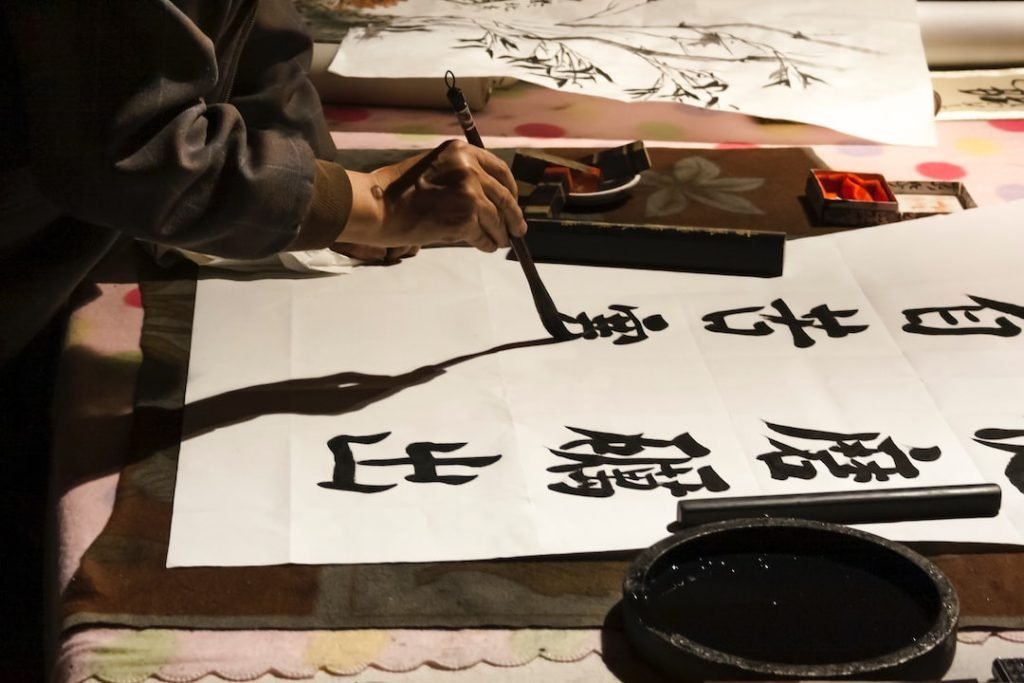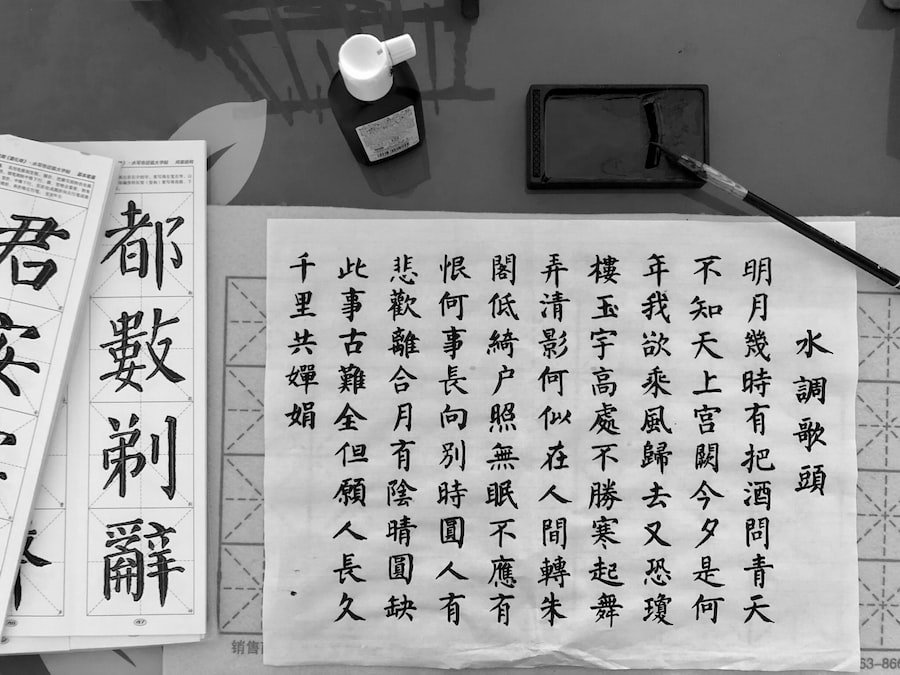

The Art of Chinese Characters Deepening Your Vocabulary Knowledge
Chinese characters have a rich history that dates back thousands of years. They are an essential part of the Chinese language and culture, and their significance cannot be overstated. The origins of Chinese characters can be traced back to ancient pictographs, which were simple drawings that represented objects or ideas. Over time, these pictographs evolved into more complex characters that represented not only objects, but also sounds and concepts.
Chinese characters are unique in that they are not based on an alphabet or a phonetic system like many other languages. Instead, each character represents a whole word or concept. This makes learning Chinese characters a challenging but rewarding endeavor. The ability to read and write Chinese characters is considered a mark of literacy in Chinese society, and it is an important skill for anyone who wants to fully understand and appreciate Chinese culture.
Table of Contents
ToggleThe Evolution of Chinese Characters over Time
Chinese characters have gone through several stages of evolution over the centuries. The earliest known form of Chinese writing is oracle bone script, which was used during the Shang Dynasty (c. 1600-1046 BCE). This script was carved onto animal bones or turtle shells and used for divination purposes. Oracle bone script consisted of simple pictographs that represented objects or ideas.
During the Zhou Dynasty (1046-256 BCE), a more standardized form of writing called seal script emerged. Seal script was characterized by its angular and symmetrical strokes, which were carved onto seals made of stone or metal. This script was used for official documents and inscriptions.
In the Qin Dynasty (221-206 BCE), seal script was further simplified into a script known as clerical script. Clerical script was easier to write and read than seal script, and it became the standard form of writing during the Han Dynasty (206 BCE-220 CE).
During the Tang Dynasty (618-907 CE), a new script called regular script was developed. Regular script was characterized by its rounded and flowing strokes, and it became the most widely used script in China. It is still used today in printed materials and formal writing.
The Structure and Components of Chinese Characters
Chinese characters are made up of different components, or radicals, that give them their meaning. Radicals can be thought of as the building blocks of characters. There are over 200 radicals in the Chinese language, and they can be combined in various ways to create thousands of different characters.
Radicals can be divided into two categories: semantic radicals and phonetic radicals. Semantic radicals give clues about the meaning of a character, while phonetic radicals give clues about the pronunciation of a character.
For example, the character “人” (rén) means “person” and is made up of the radical “亻” (rén), which means “person,” and the radical “二” (èr), which represents the sound “rén.” By understanding the meaning and pronunciation of these radicals, you can easily understand the meaning and pronunciation of the character as a whole.
The Importance of Learning Chinese Characters for Vocabulary Building
Learning Chinese characters is essential for building vocabulary in the Chinese language. Unlike languages that use an alphabet or a phonetic system, Chinese characters represent whole words or concepts. This means that by learning a single character, you are actually learning multiple words at once.
For example, the character “好” (hǎo) means “good” or “well.” By learning this one character, you also learn words like “好吃” (hǎo chī), which means “delicious,” and “好看” (hǎo kàn), which means “good-looking.” This allows you to expand your vocabulary quickly and efficiently.
In addition to helping with vocabulary acquisition, learning Chinese characters also helps with reading comprehension. Many Chinese texts, such as newspapers, books, and websites, are written in characters rather than pinyin (the romanization of Chinese). By being able to read characters, you can access a wealth of information and gain a deeper understanding of Chinese culture and society.
Techniques for Memorizing Chinese Characters
Memorizing Chinese characters can be a daunting task, but there are several techniques that can make the process easier and more enjoyable.
One technique is to break down characters into their components or radicals. By understanding the meaning and pronunciation of these radicals, you can easily remember the meaning and pronunciation of the character as a whole. For example, the character “家” (jiā) means “home” and is made up of the radical “宀” (mián), which means “roof,” and the radical “豕” (shǐ), which means “pig.” By visualizing a pig under a roof, you can easily remember that “家” means “home.”
Another technique is to use mnemonic devices or memory aids. Mnemonic devices are mental shortcuts that help you remember information. For example, to remember the character “山” (shān), which means “mountain,” you can imagine a mountain with three peaks that looks like the character itself. This visual image will help you remember the character more easily.
Common Chinese Characters and their Meanings

There are thousands of Chinese characters, but some are more commonly used than others. Here are a few examples of commonly used characters and their meanings:
– 人 (rén): person
– 大 (dà): big
– 小 (xiǎo): small
– 木 (mù): tree
– 水 (shuǐ): water
– 火 (huǒ): fire
– 土 (tǔ): earth
– 日 (rì): sun
– 月 (yuè): moon
– 雨 (yǔ): rain
These characters are used in everyday language to describe people, objects, and actions. By learning these characters, you can start to understand and use basic Chinese vocabulary.
The Role of Chinese Characters in Chinese Culture and Society
Chinese characters play a significant role in Chinese culture and society. They are not only a means of communication, but also a form of art and expression.
In Chinese art, calligraphy is highly regarded as a form of artistic expression. Calligraphy is the art of writing characters with a brush and ink, and it requires skill, precision, and creativity. Calligraphy is often used to write poems, inscriptions, and other forms of literature. It is also used in traditional Chinese painting to add depth and meaning to the artwork.
In addition to art, Chinese characters also have a rich history in literature and history. Many classical Chinese texts, such as the works of Confucius and Laozi, are written in characters. These texts have had a profound influence on Chinese culture and society, and they continue to be studied and revered today.
The Connection between Chinese Characters and Calligraphy
Calligraphy is closely connected to Chinese characters. In fact, calligraphy is often considered the highest form of art in China.
Calligraphy is not just about writing characters; it is about expressing the beauty and spirit of the characters through brushstrokes. Each stroke is carefully planned and executed to create a harmonious and balanced composition.
Famous calligraphers throughout history have left behind a legacy of beautiful calligraphy that is still admired today. One such calligrapher is Wang Xizhi, who lived during the Jin Dynasty (265-420 CE). Wang Xizhi’s calligraphy is known for its elegance and grace, and he is often referred to as the “Sage of Calligraphy.”
Another famous calligrapher is Su Shi, also known as Su Dongpo, who lived during the Song Dynasty (960-1279 CE). Su Shi’s calligraphy is characterized by its bold and expressive style, and he is considered one of the greatest calligraphers in Chinese history.
The Use of Chinese Characters in Modern Technology and Communication
While Chinese characters have a long history, they are still very much a part of modern technology and communication in China.
Chinese characters are used in social media platforms like WeChat and Weibo, where users can post updates, share photos, and send messages using characters. In fact, many Chinese people prefer to communicate using characters rather than pinyin or other romanization systems.
Chinese characters are also used in messaging apps like WhatsApp and Line, where users can send text messages and voice messages using characters. These apps often have built-in features that allow users to input characters using handwriting recognition or by typing pinyin and selecting the correct character from a list.
Conclusion
Chinese characters are an integral part of the Chinese language and culture. They have a long and rich history, and they continue to play a significant role in modern society. Learning Chinese characters can be challenging, but it is also rewarding and essential for anyone who wants to fully understand and appreciate Chinese culture. With the right resources and techniques, anyone can master the art of Chinese characters.
FAQs
What are Chinese characters?
Chinese characters are logograms used in the writing of Chinese, Japanese, and Korean languages. They are pictorial representations of words and concepts.
Why is it important to learn Chinese characters?
Learning Chinese characters is important for anyone who wants to read and write in Chinese. It is also important for understanding Chinese culture and history.
How many Chinese characters are there?
There are over 50,000 Chinese characters, but only about 20,000 are commonly used.
What are the basic strokes of Chinese characters?
The basic strokes of Chinese characters are horizontal, vertical, left-falling, right-falling, and dot.
What are radicals in Chinese characters?
Radicals are the basic components of Chinese characters. They are used to classify characters in dictionaries and to help learners remember the meaning and pronunciation of characters.
How can I deepen my knowledge of Chinese characters?
You can deepen your knowledge of Chinese characters by practicing writing them, memorizing their meanings and pronunciations, and reading Chinese texts. You can also use online resources and apps to help you learn.
If you want to learn Chinese, you can register for classes here. We look forward to hearing from you and helping you become fluent in Chinese!
If you want to learn Norwegian, you can register for classes here. We look forward to hearing from you and helping you become fluent in Norwegian.





